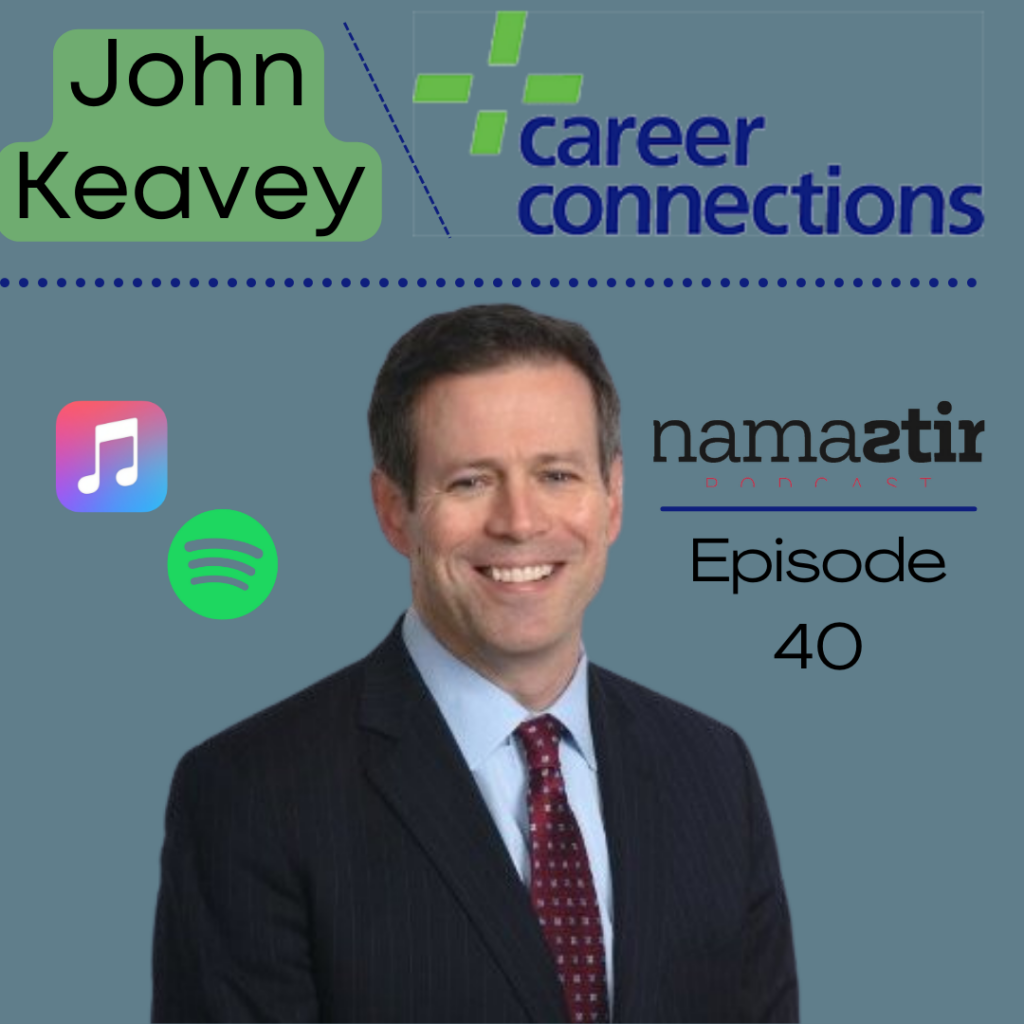My latest conversation on the Namastir podcast was a very stimulating and engaging one, and was a little different than most of my podcast talks – this one was with a competitor, so to speak. I had the pleasure of sitting down with John Keavey of Career Connections and we discussed how essential it is to keep the communication pathways open between recruiter and client, why filling a low level position is often harder than filling an executive slot, and past recruiting attempts gone very wrong. Check out the podcast here for the entire conversation.
Communication is Crucial
The recruiter/client relationship can be a challenging one to get off the ground if both sides aren’t cognizant of the other’s expectations. A hiring manager only brings a recruiter on if they are in need of outside help in filling an important role or roles. For all the tools and strategies that a good recruiter can bring to bear, a successful placement requires the recruiter and their client to work in tandem.
The very first step in this process is clear communication. Without it, the partnership is on rocky ground before it can even move forward with an effective search. As Keavey explains, “The number one thing I ask for from my clients is just good feedback, steady feedback, feedback that is timely so I can communicate with my candidates and refine my process.”
Sometimes this ambivalence towards communicating quickly and regularly from the client side stems from a belief that a recruiter isn’t even necessary. To that, John Keavey has an answer. “If I get that immediate pushback from someone who doesn’t normally use recruiters, doesn’t see the need for recruiters, I ask them how much time they’re spending sorting through resumes. I talk to them about the value of their time and what they could be doing other than spending hours and hours recruiting and sourcing themselves.”
Hardest Position to Fill? It Isn’t the CEO
From the outside looking in, it might appear to the layperson that locking in the company’s top role – or other executive C-Suite positions – would be the hardest nut to crack for a recruiter. But that isn’t often the case. Sometimes weeding through the stacks and stacks of young professionals to find the perfect candidate for a reasonably low-level analyst or marketer job is actually far more challenging, as Keavey can personally attest to.
“Some of the lower-level jobs are much more difficult to recruit. I get a lot of requests for sales or marketing and you’ll find lots of people with 2-3 years of experience there. It’s a hard range to recruit because most of them are still in their first job at that point and they’re focused on making a longer run in their current firm. And you’re trying to pull them out.”
Other factors can potentially converge to make the sales job that you thought would be a piece of cake to place wind up becoming an obstacle course of hiring pitfalls. “Clients aren’t necessarily willing to throw tons of money at a person for jobs at this level, so you have to sell both sides as to why they should come together and that’s a tough job,” says John Keavey. “The maturity level of candidates can also be a bit lacking for jobs needing less experience. Somebody who is well into their career has an appreciation for it. They’re more serious, they know what they want, and can be an easier audience to deal with.”
When Recruiting Goes Wrong
The role of a recruiter can often be a tricky one, as we routinely must juggle the needs of our client with the potential and experience of the available candidates. Sometimes the process is as smooth as clockwork: we find an ideal candidate who checks all the boxes, the interview is a success, and company and candidate begin a long-lasting and fruitful relationship.
But there are other times when this welcome series of events unfortunately does not occur. Occasionally, what appears on the surface to be a hopeful possibility instead implodes in spectacular fashion. Said John Keavey, “I was working with a software company and found them a salesperson I had found from a competitor. He went through the process, got the offer, signed the offer, and we set a start date.”
“It’s his first day and I get an email from his manager at 1pm. The guy went out to lunch and didn’t come back. It turns out he never quit the job he was currently in. He decided he would try it out and decided to go back to his old job at lunchtime.”
Situations like these, while rare, reinforce the need for an open and honest relationship between both recruiter & client and recruiter & candidate. One of the worst results of a candidate search is a bombshell of withheld information that can throw a wrench into a placement right when both sides thought the deal was done. Choosing the right recruiter with time-tested industry experience can minimize similar situations and their resulting fallout.
For more conversations like this, please check out previous episodes of the Namastir podcast.
